Greetings Europa Barbarorum fans.
Today we are proud to present the Boii, the oldest of all Celtic peoples in Europa Barbarorum. These eastern Celts pose a formidable threat to the entire continent. Their warriors are ferocious and battle hardened, their kings are mighty and crafty, and their coffers overflow with the riches of trade. They remember the ancient Celtic empire, and if it would be reforged, they would have it done at their hands. They have the power and sway to attempt such a feat, and need only a leader to carry forth their power in all directions.
Faction Description
You have come to power by way of election, rightful heir of the great former king, and we honor you, as the selected master of our people. Your fathers were great, and their blood is in you. Their conquering stature has led them to victory over nations and kingdoms without count, driving the enemies and the wicked and the foolish to beyond our borders. In the life of your father, you were chosen, our lord, amongst your brothers and cousins, as the greatest to lead us. Now, you must prove it. You must be fair and just, brave and merciful, warlike and kind. With our enemies show mercy when they cower before you, and with our friends deal lavishly when they demonstrate their loyalty. Show favor to both former foe and long-time friend, that all may be unified in serving us, and experience the blessings of the safety and friendship we provide.
Long ago, our lands were the wellspring of true civilization. Here our ancient fathers forged our people and our ways; as true heroes they overcame foolishness with honor, and expelled the despots and wicked men from our lands. Our people are now ruled in true justice and fairness to all the children of the glorious Sky Father, who birthed our glorious race. Our walls stand strong, our herds are healthy and full, and the lordly halls resound with poetry and music glorifying our great warriors and heroes, invincible in their glory for eternity.
This greatness is threatened though. Our immediate concern should be for security of our prosperous and ancient people, for those who have gone out from us have been in many places turned back. Our brothers were wicked whom Taranis and other gods slew in the mountains of Hellas, but many great warriors have fallen as well to the swords and spears of those effeminate Makedones and cursed Romanoi. Worse still, the savage tribes of the far north are stirring at our borders. Their raids have shown what sort they are. They will not stop until defeated and subjugated, or until they control all we hold dear to us. All the villages, the farms, the little ranches, our homes, of innocent people even, who have never known war, they will seek them, and they will take them. Until justice is upturned and peace is a byword, they will not stop. We must break them. In war and violence, we must drive them back. Innocent and soldier alike will suffer the wrath of the enemy, and so their innocents, if such a thing truly exists among such people, and their warriors must suffer our wrath. We must teach them that we can mete out justice and wrath as well as trade in cattle and coin. Into our friendship we must bring, though, our kin, who shortsightedly set themselves against each other, rather than raising their sword, spear, and axe against our common foes. Together we will release a fury on our enemies that the world has not seen since ancient days.
Some among our enemies, those who are men wise, fair, and honorable, may yet join us, and we can use them against their tyrants, wretched men who pervert justice, abuse traditions, and scoff at their oaths. But first their raiders must meet with merciless steel, and so must all who would plunder of us of our women and carry off our cattle. When our enemies pass beneath our yoke and pledge fealty to you, we may forge an empire like that of old. As for our neighbors the Uolkai and Skordiskoi and other Keltoi, the Galatai across the mountains, and even the Pretanoi over the sea; these share much with us and many remember our ancient right to lead, and those who do not join us in gladness may soon learn to do so by force. We will send all our enemies hence from the world to the land beyond to face their judgements before the councils of law of Sukellos, who created all things.
There was a time when Keltoi controlled great amounts of land. They were confederated, allies. But that fell apart, and all we are doing now is holding onto the last strains of a great history. That can be changed, though. We still have life in us, and great smiths, warriors, and a glorious culture. We deserve the glory that was robbed from us by centuries of collapse and infighting. What have the many tribes but war and anger over who is right to rule? We can bring them peace, and unity, as it once was. We can bring them power to defeat their enemies. We can forge a grand kingdom, and by it rule a people who blanket the earth. We alone truly have the power to achieve such a task, to unite such a great and strong people. In our people alone may one find the wealth, the warlikeness, and the will. The barbarians in their villages will tremble at the sounding of our horns, the councils of our western tribes will entreat the fair rulings of our king, and Hellene and Romanos will quake lest they ever again break their oaths with us. Our glorious people deserve a lasting peace and a great kingdom, and we will give them one.
The Faction Symbol
The faction symbol for the Boii show its primary deity, the three faced Lugus. He was often compared with Mercury for its association with artisans, blacksmiths, traders and wanderers, and also for being inventor of all the arts and arbitrator of oaths and contracts. He is also compared with Woden or Wodanaz, for both are the patron deity of traders and travelers, and they also have similar symbology: the crow is, among others, a totemic animal for both deities, and both Wodanaz and Lugus' primary weapon is a spear.
Lugus was widely worshipped in the entire Celtic world, from Celtiberia to the Tin Islands all the way to Eastern Europe. But there are an elevated number of shrines dedicated to him in the Boii heartland, which is quite adequate considering the particularly favorable position of the Boii homeland for trade, standing at the crossroads of the most important trade lanes in Europe, including one of the most lucrative: the Amber Route.
This particular image is an adaptation of several findings located in the Boii homeland, modern day Bohemia or Czech Republic, that depict the three faced god Lugus.
The Settlements
These will be the strategy map settlements for the "barbarian" culture, incluiding the Boii faction. Enjoy!
Village
Town
Large Town
City
Large City
Huge City
The Warriors
Argoi (Ar-goy - "Nobles")
" style="float:right;margin:0 0 0 10px;" />
The Argoi belong to the cream of Celtic society, and make up some of the most elite warriors that the Celtic peoples can bring to bear.
They fight on foot with the best equipment money can buy: a fine quality longsword and the Gaesum, a sturdy war spear. Each soldier has a bronze Montefortino helmet, richly decorated and adorned with a plume, as well as a large shield painted with colourful patterns. Many can also afford to wear body armour of some sort, usually consisting of a hardened leather cuirass or simple mail shirt extending down to below the waist. As time passes, the increasing availability of iron and expanding wealth of the noble class leads to the Argoi becoming more and more heavily armoured, with most choosing to wear more advanced mail shirts, fitted with an extra protective layer over the shoulders. While in eastern Europe, a new type of iron helmet with improved neck protection, which would go on to form the basis for the "Coolus" type helmets of the Romani, becomes a common choice for many soldiers.
When in battle the Argoi are a awesome sight to behold. Leading the Celtic host from the front, these men can break the enemy in one furious charge. Capable of bringing down cavalry with their long spears or hacking apart infantry with their swords, they have little to fear on the battlefield except missile fire. As such, they should endeavour to close with the enemy quickly. Their morale is second to none and given that they stand to lose the most in the event of a defeat, are highly motivated. First on the field and last off it, they leave a lasting impression on the few who survive an encounter with them.
Historically, these men were from the uppermost level of Celtic society. Powerful and very rich, they could afford the finest things in life. Even though they wore gold torcs, bracelets, rich clothes and other finery, they were certainly not decadent fools. Their position was gained by and maintained only through years of constant vigilance and military prowess, something they honed through daily training. Given the time taken to rise to such a level, most were middle aged men in the prime of life but toughened by the many challenges they have faced. This made them less reckless or eager for glory than the younger warriors, and a formidable foe to face.
To bolster their authority and protect themselves in battle, they would maintain a retinue of vassals and clients, such as the famed Solduroi of the Aquitanians, whom they would equip at the expense of their own pockets. It was the expansion of this vassalage system that lead to the formation of the large and well armed professional armies of the late Celtic era, and the decline of the freeman class.
Batoroi (Bah-tor-oy - "Combatants")
" style="float:right;margin:0 0 0 10px;" />
Coming from the upper end of the freemen class, the Batoroi are able to live as full time professional soldiers. They can afford to arm themselves with the longswords, a very prestigious weapon in Celtic society, and their relative wealth is also shown in the finer quality of garments they wear, although some still choose to fight bare chested and most will also have bronze or iron torcs around their necks, to signify their higher status in society. For protection, they carry large good quality shields and sometimes a metal helmet. Only a few have any form of body armour, usually in the way of a leather cuirass. In later periods, the prevalence and quality of armour increases, with more soldiers wearing leather cuirasses, or on rare occasions a mail shirt. Metal helmets were adopted almost universally, but leather headwear was not uncommon.
The Batoroi are ferocious in combat. Following common Celtic battle tactics, they loose their javelins at the enemy before attempting to rout them with a single powerful charge. Even if their foes withstand this initial assault, the excellent morale of Batoroi means they are more than willing to continue the fight in close melee, where their longswords can prove extremely deadly.
Historically, the Celtic world of antiquity was a semi-feudal society, comprising of a warrior aristocracy ruling over vassals and freemen. These soldiers are those of the freemen class, who have chosen to follow the way of the warrior and fight for their tribe, freedom, glory or loot.
They fought with a wide variety of weapons, which they had to provide and maintain themselves, so only the wealthier could afford to fight as a full time warrior. Most of these men, despite their lowly position, were no weaklings, having excellent morale, combined with a tenacious battle spirit. They made up the majority of soldiers in the early Celtic armies that struck terror into the inhabitants of Italy and Greece in the IV-III centuries BC. Due mainly to the expansion of vassalage among the Celts in later times, the number of these free men in armies decreased, with lords preferring to pay for and equip vassals or bondsmen to fight for them, although many warriors of the free class would still choose to show up in force on the battlefield.
Uisusparos Kingetoi (Wai-soo-spar-os kin-get-oy - "Excellent Spear Warriors")
" style="float:right;margin:0 0 0 10px;" />
These soldiers come from the middle of the freemen class and can afford to commit themselves fully to the warrior life. Comprising mostly of young to middle aged men, they can be found serving as mercenaries in many armies all across Europe and even Anatolia.
Being moderately well off, they can afford some basic protection in the form of a large shield and maybe a simple helmet. They commonly fight bare chested, armed with the Gaesum, the famed Celtic war spear, and a clutch of javelins. When in battle, they prefer to fight in a dense shieldwall formation, maximizing the protection afforded by their shields, and using their spears to fight off infantry and especially cavalry, who may suffer greatly should they try to attack the formation head on. Given that their shield is their only form of protection, they are vulnerable to missile fire from the flanks or rear and thus need to take care when unsupported by their own missile troops. When on the offensive, the Uisusparos Kingetoi will hurl their javelins to weaken and disrupt the enemy's formation, before attempting to break them in a single terrifying charge. They can also act as impromptu skirmishers if the situation calls for it.
Historically, the Celtic world of antiquity was a semi-feudal society, comprising of a warrior aristocracy ruling over vassals and freemen. These soldiers are those of the freemen class, who have chosen to follow the way of the warrior and fight for their tribe, freedom, glory or loot.
They fought with a wide variety of weapons, which they had to provide and maintain themselves, so only the wealthier could afford to fight as a full time warrior. Most of these men, despite their lowly position, were no weaklings, having excellent morale, combined with a tenacious battle spirit. They made up the majority of soldiers in the early Celtic armies that struck terror into the inhabitants of Italy and Greece in the IV-III centuries BC. Due mainly to the expansion of vassalage among the Celts in later times, the number of these free men in armies decreased, with lords preferring to pay for and equip vassals or bondsmen to fight for them, although many warriors of the free class would still choose to show up in force on the battlefield.
Berukomtouga Selgoi (Beh-roo-com-too-gah Sell-goy - "Arrow and Bow Hunters")
" style="float:right;margin:0 0 0 10px;" />
These soldiers, coming from the poorer end of the freemen class, cannot afford much war equipment and thus fight with a simple bow and spear. The Celtic bow or Tougi, is a simple self bow most commonly used for hunting. While able to fire arrows across a reasonable range and with a respectable force, it does not compare to the war bows used by the peoples of the Asian Steppes. Protected by nothing but their clothes and occasionally a helmet, these huntsmen are at a severe disadvantage when fighting archery duels against professional ranged troops, and should avoid such confrontations at all costs.
The Berukomtouga Selgoi are part-time soldiers at best. Being unable to afford the life of a warrior for long, they mostly consist of hunters who will tag along during a campaign, before returning to their simpler livelihoods. As such, they are not particularly fierce and should not be expected to hold for long in combat, although their spears give them an edge over other archers and provide some defence from cavalry. Their common role is to harass and soften up the enemy, rather than to cause any real damage. However, they are fast moving, and their arrows are not entirely harmless: they can become deadly in their own right if positioned correctly.
Historically, the Celtic world of antiquity was a semi-feudal society, comprising of a warrior aristocracy ruling over vassals and freemen. These soldiers are those of the freemen class, who have chosen to follow the way of the warrior and fight for their tribe, freedom, glory or loot.
They fought with a wide variety of weapons, which they had to provide and maintain themselves, so only the wealthier could afford to fight as a full time warrior. Most of these men, despite their lowly position, were no weaklings, having excellent morale, combined with a tenacious battle spirit. They made up the majority of soldiers in the early Celtic armies that struck terror into the inhabitants of Italy and Greece in the IV-III centuries BC. Due mainly to the expansion of vassalage among the Celts in later times, the number of these free men in armies decreased, with lords preferring to pay for and equip vassals or bondsmen to fight for them, although many warriors of the free class would still choose to show up in force on the battlefield.
The Boii in 3D
We are proud to present a 3D tool that will enable you to see the models and skins in a 3D environment, thanks to Tux' work. You can download the program via Megaupload. It is about 19MB compressed, 50MB uncompressed, and the instructions are within the .zip file. Have fun!
Click here to download the tool.
The History of the Boii
" style="float:left;margin:0 10px 0 0;" />
" style="float:right;margin:0 0 0 10px;" />The Boii were a famous tribe of La Tene Celts, well known to the Etruscans and Romans, mentioned in a substantial amount of contemporary sources, yet despite their familiarity to the historians of antiquity, little in fact is known about them. They appear in three widely separate locations: in the 4th and 3rd century BCE Po River valley (called at one time, and perhaps not by coincidence, the Bodencus) where the modern cities of Bologna and Modena were once their strongholds; possibly in Anatolian Galatia as the Tolistoboioi; in 2nd century BCE Central Europe, where Bohemia (The Home of the Boii) still recalls them, and sites in Slovakia, the Czech Republic, Hungary, Austria and Poland hold their archaeological relics; and in 1st century BCE Gaul, where they settled at Gorgobina after being defeated alongside the Helvetii by Julius Caesar.
But although the Boii in Cisalpine Gaul were the first known to history, it has long been the conclusion of archaeologists and historians that their original homeland lay in the east. The precise cause of the Boian invasion of Italy is unknown: the pressures of overpopulation, a dynastic struggle, expulsion by victorious enemies - the Boii seem the archetype of the wandering Celt, large numbers of their people being able and willing to undertake immense journeys when necessary.
Polybius, Book 2, 17-20 et passimThe Celts, being close neighbours of the Etruscans and associating much with them, cast covetous eyes on their beautiful country, and on a small pretext, suddenly attacked them with a large army and, expelling them from the plain of the Po, occupied it themselves... On the southern bank of the Po, by the Apennines, the first settlers beginning from the west were the Anares and next them the Boii...When the Boii, seeing the Senones expelled from their territory, and fearing a like fate for themselves and their own land, implored the aid of the Etruscans and marched out in full force. The united armies gave battle to the Romans near Lake Vadimon, and in this battle most of the Etruscans were cut to pieces while only a few of the Boii escaped. Despite this disaster, in the very next year these two peoples once more combined and arming their young men, even the mere striplings, again encountered the Romans in a pitched battle. They were utterly defeated and it was only now that their courage at length gave way and that they sent an embassy to sue for terms and made a treaty with the Romans. This took place three years before the crossing of Pyrrhus to Italy and five years before the destruction of the Gauls at Delphi (i.e., 283 BCE); for it really seems that at this time Fortune afflicted all Gauls alike with a sort of epidemic of war.
As this first serious mention of the Boii in historical sources shows, to the Romans, Greeks, and Etruscans, the Celts appeared to come from beyond the borders of the known world, and in great numbers. They were savages; wanderers with no fixed abode, no civilized arts, no culture, living out of their wagons, the bane of settled men. Huge and hairy, but simple-minded and superstitious and with no ability to plan for the future. They could sack Rome, but lacked the foresight to keep it. Their defeat was always inevitable.
We know now that much of this is not true. Even in the early periods of the Hallstatt culture, Bohemia was a vital part of the development of the Celtic material culture that culminated in the master craftsmen of the La Tene periods, and the 2nd century BCE wave of oppida-building that swept across northwestern Europe was not restricted to the more familiar Gaul: Braunsberg, Hrazany, Stradonice, Zavist, Manching and Stare Hradisko are only some of the major sites of dense population. Archaeology has shown us that the Boii and other Celtic peoples of central Europa were developing a sophisticated material culture, practised advanced agriculture and landscape management, and maintained many lines of cultural exchange, both with other Celtic peoples to the west and with the Etruscan and Greek peoples to the south.
The early period of the Hallstatt 'Princedoms' suddenly underwent radical changes sometime between 500 and 450 BCE. This time has frequently been seen as the result of an invasion by Celtic war-bands into Bohemia as part of a "Celtic migration period" that culminated in the sack of Rome ca. 387 BCE, but a detailed examination of the evidence suggests a complex pattern of cultural change and continuity. Whatever the cause, significant upheaval was indeed taking place in early 4th century BCE Bohemia: flat inhumation burials, similar to the Bohemian sites, appear in Moravia and south-western Slovakia, and similar forms of material culture and settlement structure stretch from Bohemia over north-eastern Austria, Moravia and south-west Slovakia into the Hungarian plains south-west and north of the Danube. At the time in question, many of these burial sites were suddenly abandoned - as we think, because many of the Boii had left on their great trek to the west.
Strong connections in the material culture link the sites in Bohemia and Moravia to those of the historically attested Boii of northern Italy. Although it is not certain whether the people inhabiting all these areas were actually identifying themselves as Boii at this period, a zone of very similar material cultures had developed in central Europe by the time the Boii had become prominent in the history of the region. While they established no oppida in Italy, it is likely that they mixed with the Etruscan population: burials have been discovered with Etruscans in Boian graves sites and Etruscan men were often buried with Celtic grave goods. Female graves too had Etruscan vases, gold earrings and other items found alongside Celtic artifacts, such as a bracelet of Bohemian motifs.
The Boii remained in the Po valley until the end of the 3rd century BCE, defending their lands both against other Celts (they repelled an invasion of Transalpine Gauls in 230 BCE) and against the growing Roman hegemony. Defeat at the Battle of Telamon and alliance with the ultimately defeated Hannibal meant the end of their power there, but the Boii in central Europe remained a vibrant and significant group. Their power had increased during the 2nd century BCE, and by the last decades of that century their large oppida held sway over large swaths of land well beyond the traditional borders of the lands of the Boii. Based on coinage, material culture, and scattered literary references, the Boii exercised significant political and economic influence, and in many cases had in fact settled, regions to their west (modern Bavaria), to their north (Silesia in Poland), and to their south and east, where the Pannonian and Eraviscian plains on either side of the Danube river became home to Boii settlers.
They fought off the Cimbri and Teutones, and judging by the prominent warrior Boiorix, some of the Boii very well may have joined the marauding armies from the North, which headed down the Danube laying waste their enemies before worsting a Roman army at the Battle of Noreia in 112 BCE. In subsequent decades they continued to assert their power in Central Europe. Most notably they invested the city of Noreia itself, the linchpin to the metals trade in Norica. Their dominance of the metals trade is evidenced by the large caches of high quality coinage minted in various Boian mints in the early and middle 1st century BCE.
But it was at the very height of their power and influence that the Boii began to decline. When a contingent of Boii warriors joined the Helvetii on their 59 BCE migration westwards into Gaul, those who remained in their eastern homeland were already facing the foes who would eventually defeat them: first the Dacians, and then the Marcomanni. Between 50 and 40 BCE the Dacian king Burebista won a major victory over the Boii in the Hungarian plains, which proved decisive in ending a century or more of Boii dominance in that region; the oppidum at Bratislava was abandoned and the 'Velem'-type coinage of the region came to an end. So sudden was the depopulation that Pliny called the area deserta Boiorum- the Empty Lands of the Boii.
The Boii who had gone with the Helvetii fared no better: after defeat by Caesar, the Aedui settled the surviving Boii at Gorgobina, from whence they unfortunately supported Vercingetorix, and then faded from history.
In their homeland, their days as a viable political force ended in 9 BCE, when Maroboduos led the Marcomani into Boii-haimoz. There he capitalized on the infrastructure built into those lands through the long tenure of the Boii, establishing the first Elbe Germanic kingdom, and subjugating the remaining Boii in the region. The Boii were either absorbed into the Germanic society of their conquerors or left the home of their origin for the last time, crossing into Roman territory and leaving only some place-names behind, unless, as a few scholars think, the emergence of the Baiovarii (later known as the Bavarians) 500 years later shows the persistence of one of the greatest of the Celtic peoples - or at least the memory of their name.
Suggested Reading
Beyond the Rubicon: Romans and Gauls in Republican Italy, JHC Williams
Celtic Culture: a Historical Encyclopedia
The Ancient Celts, Barry Cunliffe
" style="float:left;margin:0 10px 0 0;" />
" style="float:right;margin:0 0 0 10px;" />
*Iaktis Apokeltôn - The Gallic language
There are many language changes for the Celts in EB2 and, at first, these may seem overwhelming to those not familiar with what they mean or the unusual spelling seldom seen. First, and perhaps most important, Gaulish is primarily a reconstructed language. There are not enough surviving records of the language to become 100% certain on certain aspects. In addition one can refer to the language as either Gallic or Gaulish interchangeably. The information seen here comes from various Gallic dictionaries on the topic, most being published in French. Gone is the Latin terminology that was seen in for many units EB1. The Gaulish language employed the use of Greek alphabets originally. Upon the conquest of Gaul in the 50s B.C., the Celts would have retained using Greek alphabets but as generations and 'Romanization' progressed, the former Greek system would have given way to Latin script. An exception could be the Provence, in southern Gaul, whose resident tribal population was exposed to 'Romanization' soon after 121 B.C., much earlier than their kin in the rest of Gaul. However, the majority of Greek based Gaulish is found in the south of Gaul, and the Latin in the central and north. Therefore in 272 B.C. the Gallic units will overwhelmingly use Gaulish as the base for the naming conventions for the Celtic military units that EB2 will have.
Gaulish is similar to Latin and Greek pronunciations and structure. The letter ‘c’ is always pronounced hard like the letter ‘k’, and not as an ‘s’ or ‘ch’ sound. The Gaulish letter ‘g’ sounds like what is heard in “go” or “get,” but does not sound like ‘j’ as in the name Joel or “jump.” In the same manner as classical Latin, the letter ‘v’ would sound like a ‘w’ or a soft “wou” sound. The letter ‘x’ in Gaulish could have been either a hard ‘k’, as in the word tech, or a ‘tch’ sound as in kitchen.
In other spelling and grammar changes for EB2, the Latin ‘v’ becomes the letter ‘u’. French linguists and authors of Gaulish dictionaries use ‘u’ instead of the Latin ‘v’ or the phonetically similar ‘w’. To best illustrate these changes, consider the personal name Vercingetorix which in this case uses the familiar Latin spelling. The way this name would sound to an ancient Gaul would be similar to Wou/Wer-kin-get-o-riks, however the way it would be spelled in game is Uerkingetorix. As mentioned before, the Latin soon became the norm in speech and in spelling. A tribe, such as the *Arikomikoi (the letter ‘k’ and the -oi ending using Greek, thus a Gallic spelling) would now be recorded as the Arecomici; the letter ‘k’ and the ending –oi eventually giving way to the Latin letter ‘c’ and the ending –i.
In addition to these changes ongoing effort is made to correct the vowel stems making sure they are modified for accurate use in the Gallic tongue and writing. One popular word for ‘warrior’ in Gaulish is ‘kingetos’ (an o-stem) which is a singular term (nominative singular or nom. sing.). This becomes ‘kingetoi’ when denoting more than one warrior (nominative plural or nom. pl.). A Gallic word for bridge, briua (an a-stem), would become *briuas or *briuias if speaking of many bridges. Other units featuring an a, e, i, o, or u-stems are treated the same. These are some of the many changes you will see for the Celts, both continental and Insular, in an effort to attune the names close as possible to what was written and spoken thousands of years ago.
" style="float:left;margin:0 10px 0 0;" />
" style="float:right;margin:0 0 0 10px;" />
*Atergkeltôn - Celtic Reforms
The Celtic world c.200 B.C. (other sources say c.150 B.C.) underwent a vast and somewhat sweeping change on the continent. Burials appear with more and more iron weapons and items. Shields become reinforced with extra metal components and the shield bosses enlarge over time. Outside of military uses iron farming implements, tools, personal items, and common household items turn up in much greater quantities than before. This great increase in iron output was not a lone regional oddity but can be traced all over continental Europe, especially within the burial panoplies by comparing early 3rd century B.C. burials with ones after 200 B.C. As in EB1 there will be 3 reform periods that will take place for the Celtic factions. When these reforms happen certain units within the factional rosters will, in essence, upgrade to a more powerful and deadly (also more expensive) version. Among these chronological changes come new helmets for certain units (such as Montefortinos giving way to Port or Agen style helmets on some units), the amount of leather and chainmail armor they use, and even the bosses upon their shield will progresses from smaller bosses to large ones in the later La Tene period which is represented in the last reform. These sweeping changes, however, will be restricted to certain noble units and some widespread units from the middle class. Archers and other low end units will not change in appearance. In addition, during these reforms certain units will appear that were not encountered before within your kingdom, denoting changes within the inner workings of Celtic society as it transitions from chiefdoms and monarchies to semi-feudal societies governed by nobles and senators, the magistrates and constitutional law, and the mighty uergobretoi. These leading men, in turn, are supported by their ever increasing number of vassals and men-at-arms both on foot and on horseback which can signal the slow decline of the free middle class.
" style="float:left;margin:0 10px 0 0;" />
" style="float:right;margin:0 0 0 10px;" />
*Keltôn Adranda Kondukta - The Class system of Celtic society
The societies and the political progressions that occurred in the Celtic society are modeled into the games and also into the units and their roles in the changing society. Leaders and nobles sought increase their following. This was always the case in the Celtic societies of Iron Age Western Europe. The Celts, who were the bravest warriors in Europe at the time, lived in a society that revolved around ones accumulation of personal prestige, renown, honor, and glory. Each tribe was essentially independent of each other and interaction between these tribes resulted in the upper class to both cooperated and also compete against each other. For the nobles this, in part, revolved around the number of vassals, men-at-arms, or clients (uassoi or ambaktoi). These terminologies even borrowed themselves into ancient Germanic as *ambahtaz and the English words ‘vassal’ and ‘ambassador’ derive from these ancient words. For EB2 these distinctions can be split into 4 overall class types: The nobility and aristocracy, the free men of the tribe or state, the vassals, and those that live mostly outside of the normal society.
Within this overview one can understand that the Celts did have a semi-feudal society where lords and his retinue are at the top, followed by lesser warriors and then the common man. The first class, and the top of this arrangement are, of course, the kings, nobles and aristocracy, uergobretoi, chiefs, and other leading men in the highest and most prestigious positions of authority. This group is represented in the Bouiroi by the Argoi and the Mogeto Epatias. They, in turn, would have another class, retinues of armed vassals or clients, in tow to support their often violent and martial ambitions. This second class in EB2 is grouped along the lines of their ‘duties’ within a military context. These range from the greatest followers like the Kombaragoues and Solduroi who can be considered the circle of most esteemed trusted followers for nobles, kings, and chiefs. For lesser vassals there are those that fulfill the role of “infantry of the line” and also mounted cavalry contingents. Next is the class of the Celtic free men. These are represented by such units and the Batoroi, Gargokladioi, Uisusparos Kingetoi and the Acus Eporedoi. These units become the backbone of your forces at least initially (until the vassals appear in the later reforms to further supplement your armies while the free class diminishes somewhat) and will provide warriors of great loyalty and drive as they stand to lose their freedoms should they falter in their bravery and warfare. At the bottom of this we find the archers, skirmishers, slingers, and other fighters that are more for support than melee, yet are still freemen who may not follow consistently the path of the warrior and could arguably consist of a class of their own. Outside of this normal structure is the fourth class. Warrior bands such as the Agospenoi Combaro or Gaisatoi, who perhaps do not fit within the so called ‘normal’ standards of Gallic society, are freemen also but follow their own leaders and fortunes.
Signature Banners
Show your support for Europa Barbarorum in style with these three new signature banners, featuring the mighty Boii! Courtesy of Gustave.































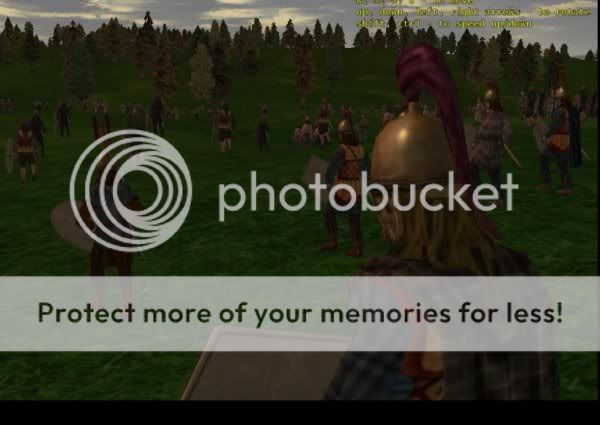






 Reply With Quote
Reply With Quote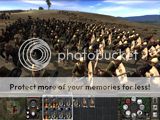
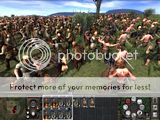
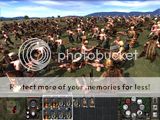
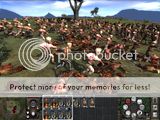
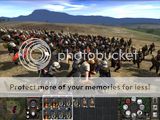
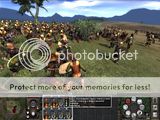
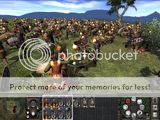
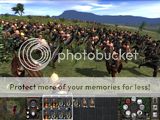
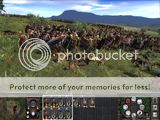
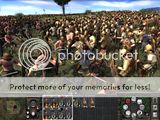
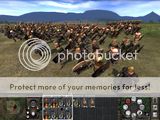
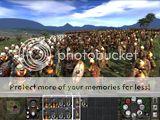
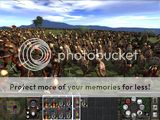
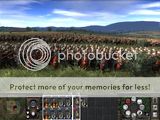
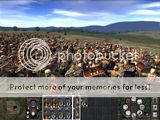
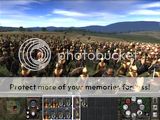
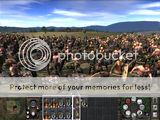
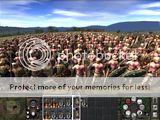
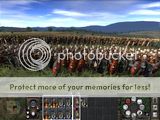

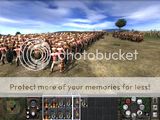
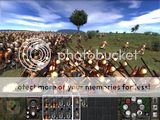
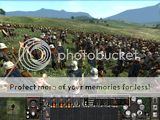
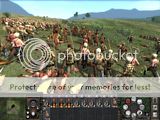
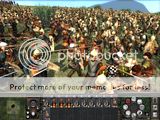
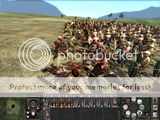
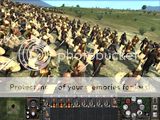
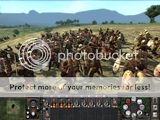
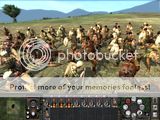
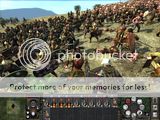
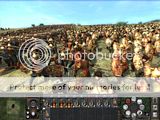
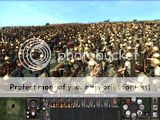
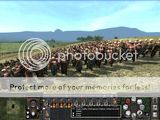
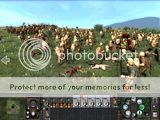
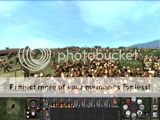
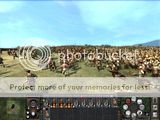
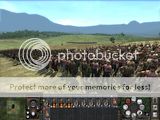
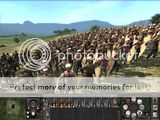
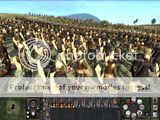
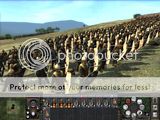
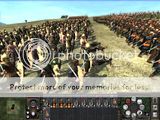
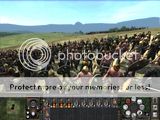

 x 15
x 15











 from Megas Methuselah, for some information on Greek colonies in Iberia.
from Megas Methuselah, for some information on Greek colonies in Iberia.















 Thrash till Death!
Thrash till Death!







Bookmarks